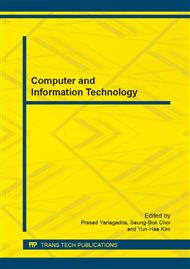p.1451
p.1455
p.1463
p.1468
p.1472
p.1478
p.1483
p.1488
p.1492
The IT Capabilities Driven Model and Evolutionary Model: Based on the Integration View of Competitive Strategy, Resource-Based View and Dynamic Capabilities
Abstract:
The IT capabilities driven model and the IT capabilities evolutionary model which based on the integration of competitive strategy, resource based view and dynamic capabilities view are built. This driven model studies the improvement and affects of IT capabilities for performance and core competencies. The driven model explains the process of IT capabilities which includes the classifications of IT capabilities, the external environment chances and threat, induction and feedback, integration and reconstruction of resources, the strategy fit and integration. The IT capabilities evolutionary model is abstracted from the process of driven model, and it explains the IT capabilities evolve into new IT capabilities after a cyclic process of old IT capabilities effects. The two models also build a structure of IT capabilities which can be used in assessing the enterprise IT capability system.
Info:
Periodical:
Pages:
1472-1477
Citation:
Online since:
February 2014
Authors:
Price:
Сopyright:
© 2014 Trans Tech Publications Ltd. All Rights Reserved
Share:
Citation:


